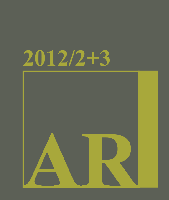UČINEK SENCE PRI SNOVANJU, ZAZNAVANJU IN DOŽIVLJANJU ARHITEKTURNEGA PROSTORA
THE SHADOW EFFECT IN THE CONCEPTION, PERCEPTION AND EXPERIENCE OF ARCHITECTURAL SPACE
Author(s): Jeronima Kastelic , Tomaž Novljan, Aleš VodopivecSubject(s): Fine Arts / Performing Arts
Published by: Fakulteta za arhitekturo, Univerza v Ljubljani
Keywords: shadow; visual perception; the problem of figure and background; illusion; emotions
Summary/Abstract: The actual meaning and role of the shadow, not only as a physical consequences of the absence of light or a natural connection between form and light, but its role in terms of finding the origin for solving the current spatial issues of contemporary architecture, architectural space in which a human being moves, lives and functions as a normal and mature personality is, therefore, on an experiential level essential to them. Consideration of the latter is most evident in the East (e.g. in Japan) as proved in the article. But it is present also in the West, especially in public buildings of special interest: museums and churches. A shadow also gives the object its own value and communicates its form to the observer. Thus, it can be used or even "exploited" for the virtual, illusory, erroneous perception of space. Knowing how a shadow affects the observer, we can achieve a certain experience. The mentioned architects prove this point by exposing the problem of figure and background. We emphasized the fact that the space is acomplete structural and functional space unit, but not only that. A place where shadows play across the space is becoming a tool for the detection of the experiential effect. Although today"s universal as well architectural period is denoted by technological advances, man will reach its optimum in it only if he will look within himself again and "feel" inside the space that surrounds him outside. Architecture will always ennoble and experientially perfecta space if it will find a place for light and shadow to have their dialogue.
Journal: AR Arhitektura, raziskave
- Issue Year: 2012
- Issue No: 2-3
- Page Range: 18-27
- Page Count: 10
- Language: Slovenian

